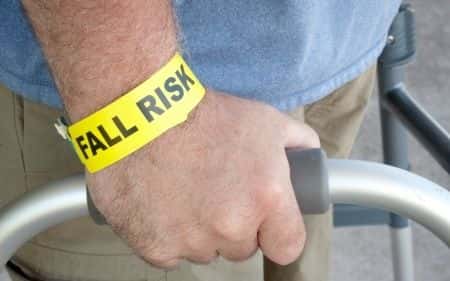Improper Fall Prevention Measures Result in Injury to Elderly Patient
Updated on
This case involves an elderly male patient with a past medical history of Stage 4 Myeloma. He was admitted to the hospital in Mississippi due to deterioration of his condition as well as general confusion. As a result of his age and confusion, the patient was assessed as a fall risk. Fall precautions included appropriate lighting, appropriate sized clothing at time of ambulation, assessment of elimination needs, assistance when needed, bed alert on, bed low and locked, night light, non-slip footwear, call light within reach, and the floor allegedly free of obstacles. Three weeks later, the patient got up out of his bed in the hospital to go to the restroom. On his way to the restroom, he tripped over a bedside commode and fell to the floor, sustaining fractures to his clavicle and humerus, as well as a laceration above one eye. After his hospital stay was extended due to the injuries, he was transferred to hospice, where he later passed away due to complications from his cancer.
Question(s) For Expert Witness
1.) Do you assess/monitor patients who are a high fall risk? If so, how often?
2.) What measures should be put in place to protect these patients?
Expert Witness Response E-000437
 I assess and monitor patients at risk for fall daily. Each patient should be assessed as to the potential for falls and appropriate measures be taken to prevent the fall. These measures include, but are not limited to, all of the measures above. However, I would consider the bedside commode as an obstacle which should have been removed from the room or placed out of the way of the path to the bathroom. This patient should have had ongoing education about the potential for falling including frequent reminders to call for help and not to get out of bed without assistance. The patient should have been moved closer to the nursing station for at least hourly observation. The nurse should ask the patient at least hourly about her bathroom needs and encourage her to go to the bathroom at that time. This would decrease the risk of an unattended fall.
I assess and monitor patients at risk for fall daily. Each patient should be assessed as to the potential for falls and appropriate measures be taken to prevent the fall. These measures include, but are not limited to, all of the measures above. However, I would consider the bedside commode as an obstacle which should have been removed from the room or placed out of the way of the path to the bathroom. This patient should have had ongoing education about the potential for falling including frequent reminders to call for help and not to get out of bed without assistance. The patient should have been moved closer to the nursing station for at least hourly observation. The nurse should ask the patient at least hourly about her bathroom needs and encourage her to go to the bathroom at that time. This would decrease the risk of an unattended fall.
About the author
Joseph O'Neill
Joe has extensive experience in online journalism and technical writing across a range of legal topics, including personal injury, meidcal malpractice, mass torts, consumer litigation, commercial litigation, and more. Joe spent close to six years working at Expert Institute, finishing up his role here as Director of Marketing. He has considerable knowledge across an array of legal topics pertaining to expert witnesses. Currently, Joe servces as Owner and Demand Generation Consultant at LightSail Consulting.
Subscribe to our newsletter
Join our newsletter to stay up to date on legal news, insights and product updates from Expert Institute.
Sign up nowFind an expert witness near you
What State is your case in?
Subscribe to our newsletter
Join our newsletter to stay up to date on legal news, insights and product updates from Expert Institute.



